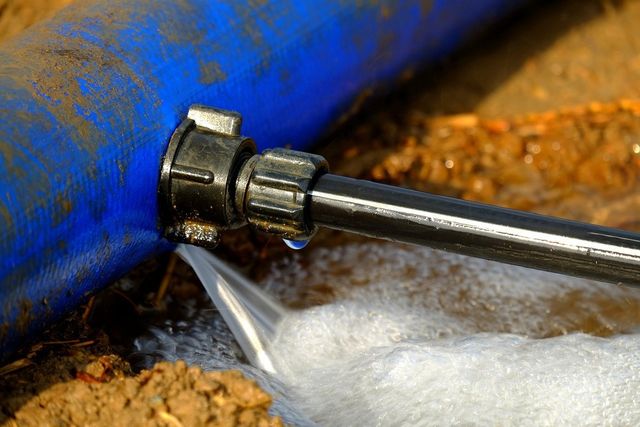Detect Invisible Water Line Leaks: Six Effective Tricks
Detect Invisible Water Line Leaks: Six Effective Tricks
Blog Article
Presented here below you can locate a bunch of helpful expertise when it comes to Hacks to detect leaks.

Early discovery of dripping water lines can mitigate a prospective calamity. Some little water leaks may not be visible.
1. Analyze the Water Meter
Checking it is a surefire way that aids you uncover leakages. If it moves, that indicates a fast-moving leakage. This suggests you might have a slow-moving leakage that might even be below ground.
2. Examine Water Usage
Evaluate your water bills and track your water consumption. As the one paying it, you should see if there are any type of disparities. If you detect sudden changes, regardless of your intake coinciding, it implies that you have leaks in your plumbing system. Keep in mind, your water bill should drop under the very same variety monthly. A sudden spike in your bill shows a fast-moving leakage.
A consistent increase every month, also with the exact same habits, shows you have a slow-moving leak that's additionally gradually escalating. Call a plumber to extensively inspect your property, specifically if you feel a warm location on your floor with piping below.
3. Do a Food Coloring Test
When it comes to water intake, 30% comes from bathrooms. If the shade somehow infiltrates your bowl throughout that time without flushing, there's a leak in between the container as well as dish.
4. Asses Outside Lines
Don't neglect to inspect your exterior water lines as well. Test faucets by attaching a yard pipe. Needs to water seep out of the link, you have a loose rubber gasket. Change this and also make certain all links are limited. If you've got a lawn sprinkler, it will certainly aid get it properly examined and kept each year. One tiny leak can waste tons of water and also spike your water costs.
5. Examine as well as Assess the Situation
Homeowners should make it a practice to check under the sink counters as well as even inside cabinets for any bad odor or mold growth. These two red flags indicate a leak so prompt attention is required. Doing regular inspections, also bi-annually, can save you from a major trouble.
Check for discolorations and also deteriorating as most devices as well as pipes have a life expectations. If you think dripping water lines in your plumbing system, don't wait for it to intensify.
Early discovery of leaking water lines can alleviate a potential calamity. Some small water leakages may not be visible. Examining it is a surefire way that helps you uncover leaks. One tiny leak can throw away loads of water and also spike your water expense.
If you believe leaking water lines in your plumbing system, don't wait for it to intensify.
How to Know If Your Home Has a Hidden Leak
Water Meter Reveals Inexplicable Water Usage
If you’d like to test whether or not there’s a leak somewhere in your home, you can do this using your water meter. Here is how to conduct the test:
Don’t use any water in your home for at least 30 minutes; this also means not turning on faucets or water-using appliances.
Go outside, and check your water meter for activity.
If your water meter shows that there was activity, even though no one was using any water, this proves that there is a leak in your home.Visible Mold or Mildew Growth
Leaks behind walls create moist, dark environments that allow mold and mildew to grow and thrive. Eventually, you might see mold growth forming on the wall closest to a hidden leak.
If mold is growing in an area that receives a high amount of moisture, such as a bathroom, it may simply be an indication that better ventilation is needed. However, if you see mold growth on a wall or the ceiling in an area where you would not expect, you probably have a hidden leak.
Musty, Mildew Odor
Sometimes you might not be able to see the mold or mildew that is growing as a result of a leak. However, the smell can give the problem away just as easily. If you catch a whiff of something musty, there’s a good chance that old water is collecting somewhere in your home that you can’t see.
Stained/Warped Walls, Ceilings, or Floors
When your home soaks up water, a variety of red flags can become visible, including ceiling stains, bubbling drywall, warped walls, and sagging floors. While these issues can be caused by excess humidity, they can also be signs that a pipe or plumbing connection has started leaking behind your walls.
Inexplicably High Water Bill
After a while, you get a general sense for what your water bill should be. If you own a pool or sprinkler system, your bill will tend to be higher during summer. However, if you receive a water bill that seems especially high, and you can’t figure out what caused it, then you may have a hidden leak somewhere that’s increasing your bill.
https://www.plumbingjoint.com/blog/2019/july/how-to-know-if-your-home-has-a-hidden-leak/

Hopefully you enjoyed reading our excerpt on Hacks to detect leaks. Thanks a ton for finding the time to read through our article. Are you aware of another person who is fascinated by the subject? Please feel free to promote it. We truly appreciate reading our article about Finding hidden leaks.
Request expert assessment. Report this page